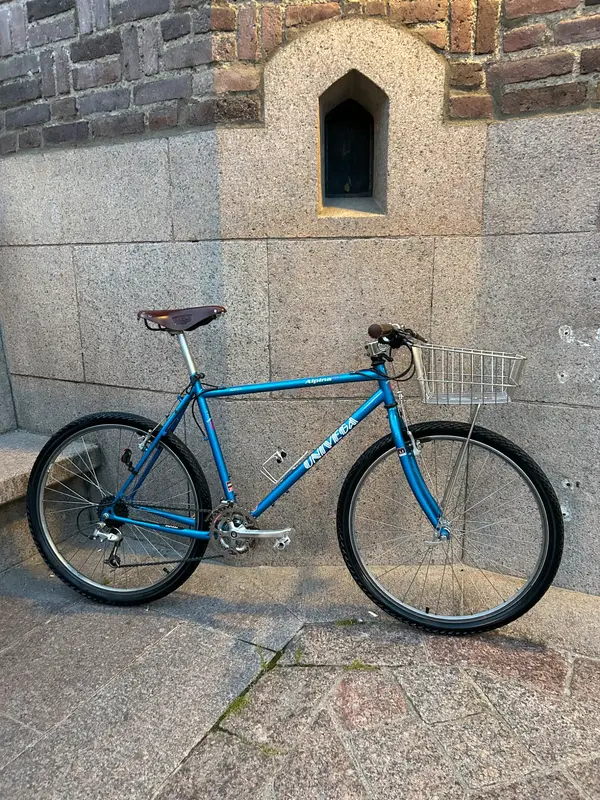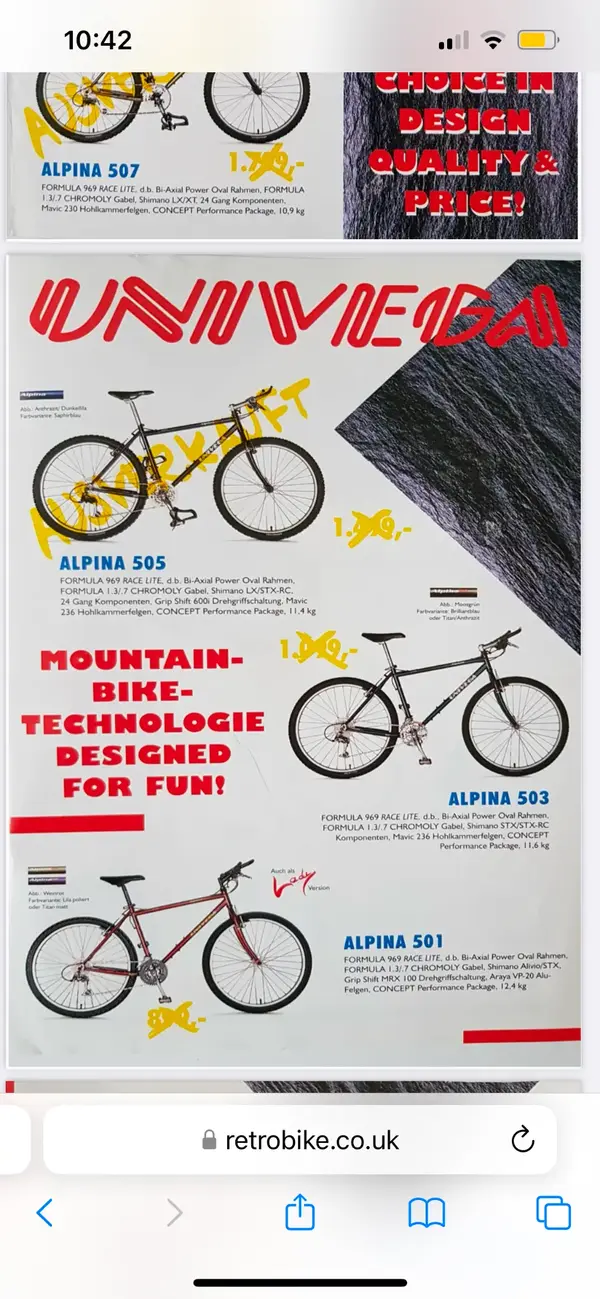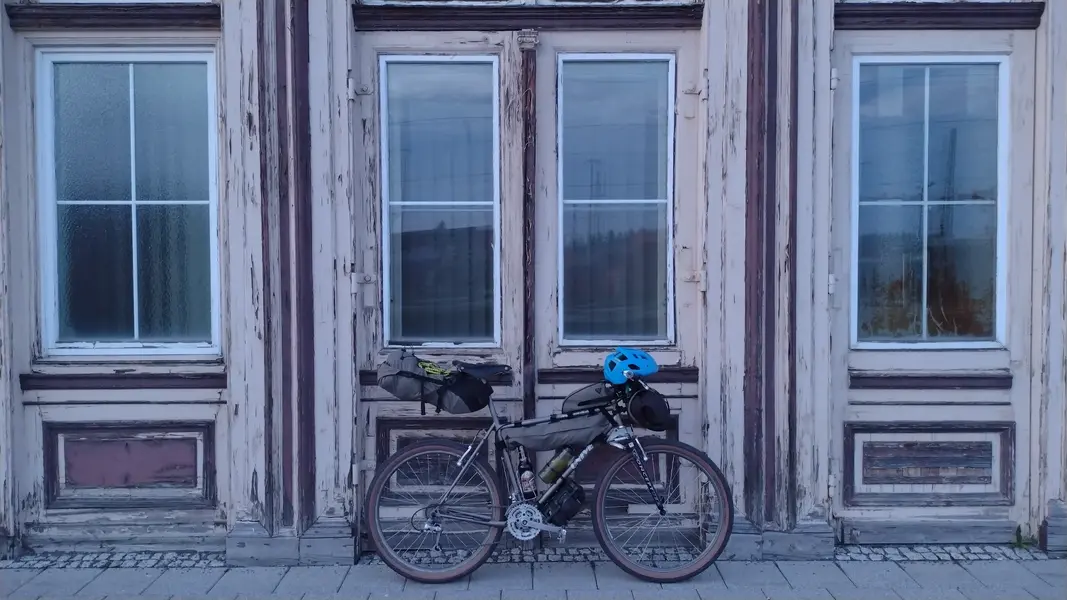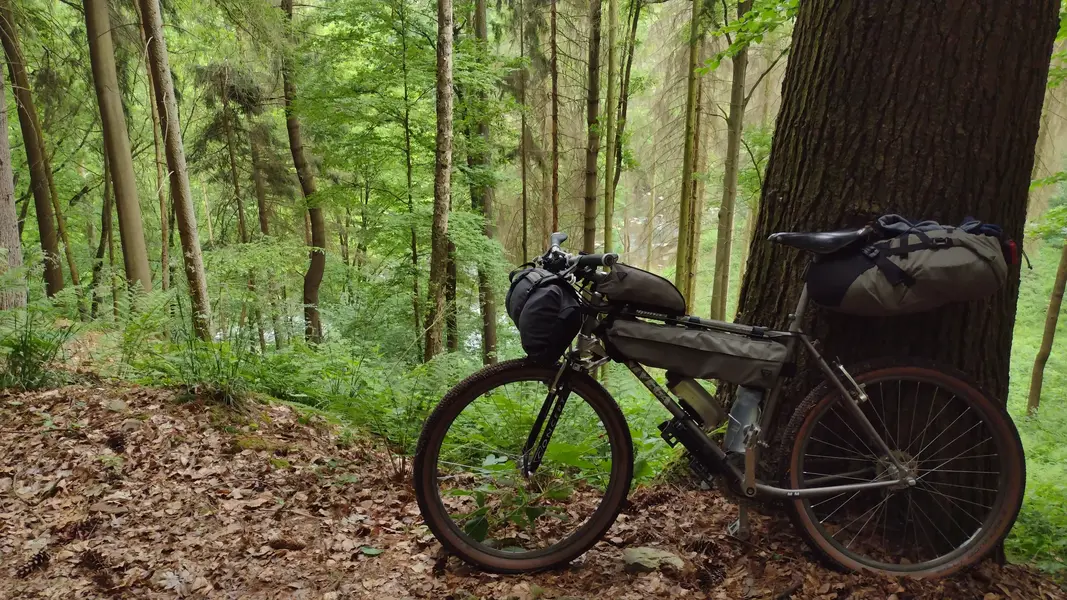I owned one (the SE variant, whatever that added which i dont recall) when it was part of an end of line stock at a local ‘bike warehouse’ store (ie a place with probably about a 100 bikes of various brands, mostly sub/boutique brands but within the masses were often end of line quality items too). Having previously worn out (literally) a Diamondback MTB after two years crazy hard usage, i bought from the same outlet after digging through the stock and came across the Univega - it was under my budget, had a decent set of mechanics (full Shimano Altus/Alivio and braking) and rims (far in excess of what was commonly found at the budget).
Only thing i did to it mod wise was a longer more forward stem (as i was often aero) with a set of clamps and a short bar for extreme aero riding, and replaced the brakes shoes with Fibrax Black shoes (the hardest compound) and a set of Conti 26x1.5 slick boots and 130 psi rated tubes so running tyre pressures around 90-100 psi. Somewhat extreme, i guess, but my riding style had rapidly made that degree of technical mods a necessity.
However, none of that was necessary for most people or probably worth it (bar maybe the new shoes and possibly the slicks if you’re mostly roading). As supplied, was properly dialled in and i can safely say the complimentary reviews from back in the day about it being a budget bike that punched above its class weren’t BS.
Put it this way, seeing 45mph+ and still being stable wasn’t uncommon (the first 45mph test run was pre-mods). Post mods, with aero advantage fully employed, saw nearly 65mph on dual carriageway in top gear, another twenty coming off a long A-Road down a two mile steep hill.
When i eventually traded it in against an fully alu framed rigid bike, with mods still in place, i actually came away with something i applied the same mods too.
Outside of regular bike mods, i built a li-po powered lighting (prototyped on the Univega and fully finished on the replacement) with dual rear lights which alternated to brake lights when braking and front/rear indicators using an array of SB leds for each ‘lamp’) with a backup battery and circuit and a third li-ion cell used to run my mobile radio transceiver and scanner, with bonded offset mount off the seat post for a dual band mobile collinear antenna, the scanner wideband antenna was on an offset from the long front bar stem.
So as for the obvious question about was the basic bike good, clearly so, easily modded to suit my more extreme usage, definately.
Value at the time, excellent, and if sentiment was a value multiplier, priceless.
Made a lot of flash bstards running mid range Trek and Giant alu framed showpieces like very pointless and irrelevent when they mocked my steel framed ‘tank’ and i proved it was anything but a heavy waste of space. If anything, and with a doubly big base budget i could have got better off the shelf, but given 50% of that would have been buying into a quality brand name people recognised, it’s low recognition (in the UK) brand actually probably helped a bit making it less theft attractive, and trying to quietly get it into the back of a van would have (post full modded) needed a ramp as it was bloody heavy to lift as you can imagine.
It was also a test bed for a very advanced anti-theft system i designed where if you didn’t disarm it (remotely, on 430.005 Mhz using an uncommon RF mode and key exchange) all the exposed metal would have given a thief a nasty EHT shock.
So yeah, it was a brilliant bicycle and on no level do i regret owning one. If i had a looking back regret, it would be they were so uncommon that it was hard to recommend them to anyone at the time as there were few Univega sources to buy from - which was a shame.
Probably, today if my legs and general health weren’t shot to pieces, i’d probably use a dual motor S600 E-bicycle as a modern equiv to turn into a mobile field radio bike. But things have come a long way, but i doubt the quality would be as high.



